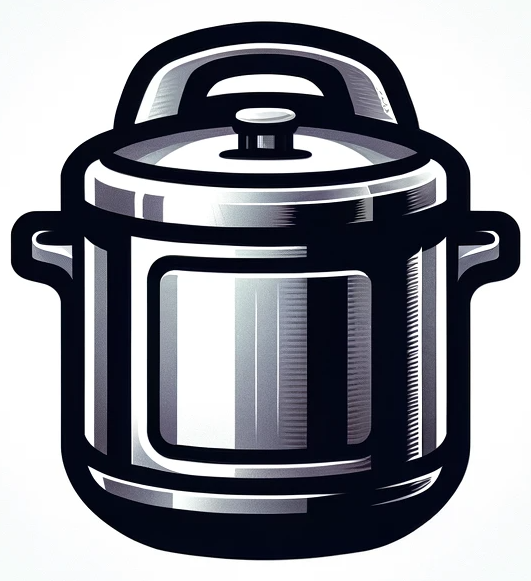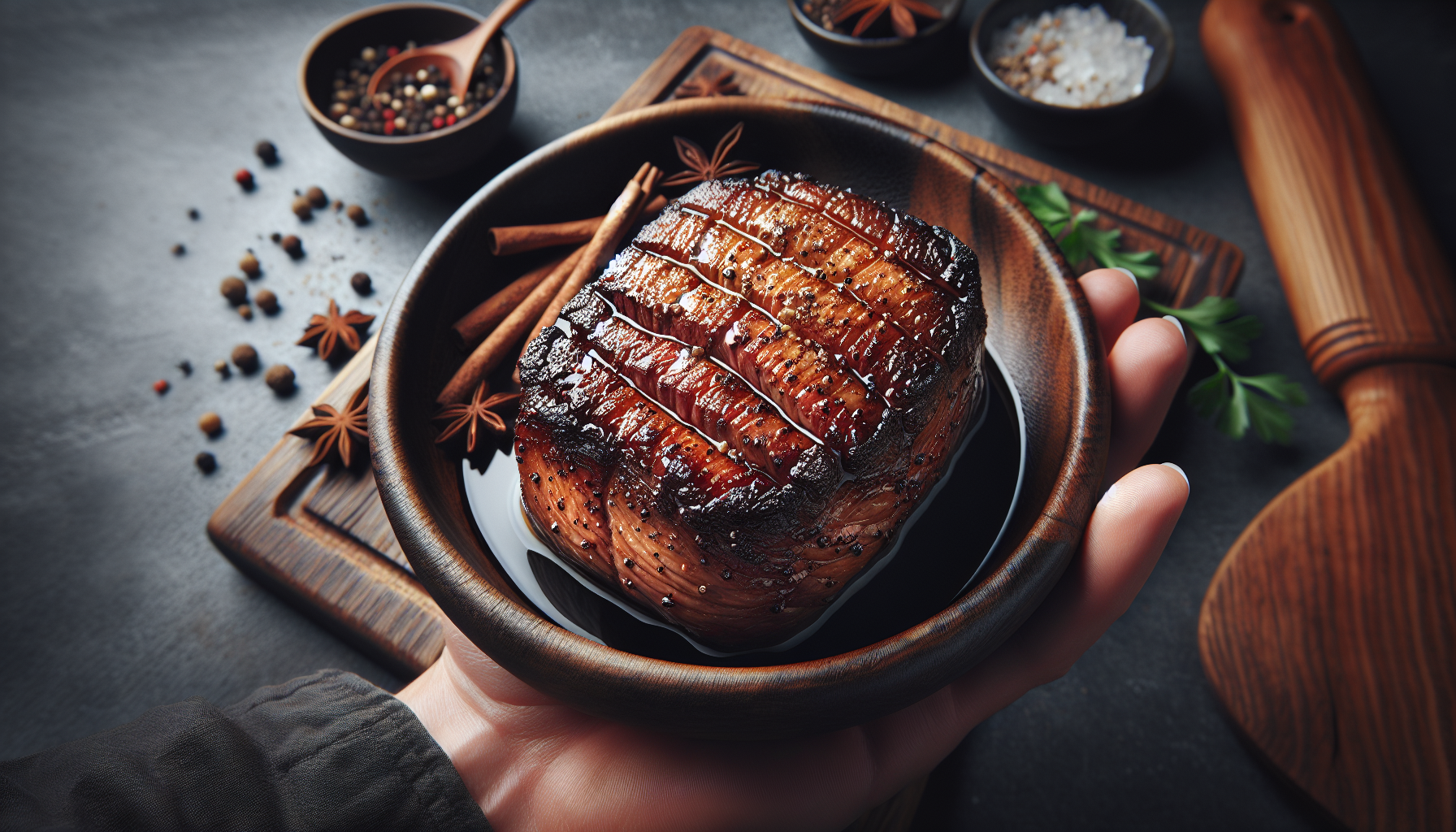Have you ever wondered if it’s necessary to cook meat before putting it in a slow cooker? Whether you’re a seasoned chef or just starting out in the kitchen, this question can often lead to confusion. In this article, we’ll explore the reasons behind pre-cooking meat before using a slow cooker and whether it’s an essential step or merely a matter of preference. By understanding the role of pre-cooking in slow cooking, you’ll be equipped with the knowledge to create delicious meals with your slow cooker.
CHECK OUT PRESSURE COOKERS ON AMAZON
1. Why Use a Slow Cooker?
A slow cooker, also known as a crockpot, is a versatile kitchen appliance that can simplify and enhance your cooking experience in several ways. Here are some reasons why using a slow cooker is a great idea:
1.1 Convenience and ease of use
One of the biggest advantages of using a slow cooker is the convenience it offers. Simply prepare your ingredients, set the desired cooking time and temperature, and let the slow cooker do the rest of the work. You can easily prepare a delicious home-cooked meal without spending hours in the kitchen watching over a hot stove.
1.2 Retains flavors and nutrients
Slow cooking allows the flavors of the ingredients to develop and meld together over time. By cooking your meat slowly, you can fully enhance its natural flavors and create mouthwatering dishes. Additionally, the slow cooking process helps to retain more of the nutrients compared to other cooking methods that involve higher heat and longer cooking times.
1.3 Tenderizes tough cuts of meat
One of the magical things a slow cooker can do is transform tough cuts of meat into tender, succulent dishes. The low, consistent heat allows the collagen in the meat to break down slowly, resulting in melt-in-your-mouth textures. This makes it an ideal cooking method for cheaper cuts of meat that would otherwise be tough and chewy if cooked using conventional methods.
CHECK OUT PRESSURE COOKERS ON AMAZON
2. Advantages of Cooking Meat Before Putting in a Slow Cooker
While slow cookers are designed to cook food slowly and evenly, there are some advantages to cooking meat before placing it in the slow cooker:
2.1 Added flavor from browning
By searing or browning meat before slow cooking it, you can add a depth of flavor that enhances the taste of the final dish. This step helps to develop a rich and caramelized exterior, which contributes to a more complex and delicious flavor profile.
2.2 Improved texture and appearance
Cooking meat before using a slow cooker can also improve the texture and appearance of the dish. Browning the meat creates a crust which adds a desirable texture to the meat. Additionally, the finished dish will have a more visually appealing appearance with beautifully browned and caramelized meat.
2.3 Reduced risk of foodborne illnesses
Cooking meat before putting it in a slow cooker can help reduce the risk of foodborne illnesses. Searing the meat before slow cooking helps kill off any harmful bacteria that may be present on the surface. This extra precaution ensures that the meat is safe to eat once it reaches the desired internal temperature during the slow cooking process.
3. Not Cooking Meat Before Using a Slow Cooker
While there are advantages to pre-cooking meat, it is not always necessary or practical. Here are some points to consider when deciding whether to cook meat before using a slow cooker:
3.1 Safety concerns
Although pre-cooking meat can help reduce the risk of foodborne illnesses, slow cookers are designed to cook food at low temperatures over an extended period. This cooking method kills bacteria and other pathogens, making it generally safe to cook meat directly in the slow cooker. However, it’s important to handle and prepare the meat properly to minimize any potential risks.
3.2 Incorrect cooking temperature
One common concern when not pre-cooking meat is ensuring that it reaches a safe internal temperature. Meat should reach a temperature of at least 145°F (63°C) to be considered safe to consume. When cooking meat directly in a slow cooker, it is crucial to use a meat thermometer to ensure that the meat reaches and maintains the proper temperature throughout the cooking process.
3.3 Increased risk of food poisoning
If meat is not cooked properly in a slow cooker, there is an increased risk of food poisoning. It’s essential to follow recommended cooking times and temperature guidelines to ensure that the meat is thoroughly cooked. Using a slow cooker correctly and practicing good food safety habits greatly reduces the risk of foodborne illnesses.
4. Factors to Consider When Deciding
When deciding whether to cook meat before putting it in a slow cooker, several factors come into play:
4.1 Type of meat
The type of meat you are using can influence whether or not you should pre-cook it before using a slow cooker. Tough cuts of meat, such as chuck roast or pork shoulder, benefit from pre-cooking to enhance tenderness and flavor. On the other hand, more tender cuts, like chicken breast or tenderloin, can be cooked directly in the slow cooker without pre-cooking.
4.2 Cooking time
Consider the length of time the slow cooker will be operating. Longer cooking times allow the meat to cook thoroughly and kill any bacteria present. If you plan on cooking for an extended period, cooking the meat directly in the slow cooker without pre-cooking may be sufficient.
4.3 Personal preference
Personal preferences and desired outcomes play a significant role in the decision-making process. Some individuals may prefer the flavor and texture that pre-cooked meat provides, while others may find the convenience of cooking the meat directly in the slow cooker more appealing. Consider your desired taste and texture when making your decision.
5. Cooking Meat Before Putting in a Slow Cooker
When choosing to pre-cook meat before using a slow cooker, there are a few techniques to consider:
5.1 Browning the meat
Browning the meat in a hot skillet or oven before placing it in the slow cooker adds a rich depth of flavor to the final dish. This technique caramelizes the natural sugars in the meat and creates a savory crust.
5.2 Searing for added flavor
Another method is to sear the meat on high heat, either on the stovetop or in the oven, for a shorter period. This helps seal in the juices and enhances the overall flavor of the dish.
5.3 Pre-cooking for food safety
Pre-cooking the meat until it reaches a safe internal temperature is crucial for food safety when using a slow cooker. By following recommended cooking guidelines and ensuring proper heat penetration throughout, you can minimize any risks associated with foodborne illnesses.
6. Slow Cooking Meat Without Pre-cooking
If you choose to cook meat directly in the slow cooker without pre-cooking, there are specific considerations to keep in mind:
6.1 Tips for safe cooking
To ensure safe cooking without pre-cooking the meat, follow these tips: 1) Use fresh, high-quality meat. 2) Thaw frozen meat completely before placing it in the slow cooker. 3) Cut meat into smaller pieces to ensure even cooking. 4) Do not overcrowd the slow cooker to allow proper heat circulation.
6.2 Adjusting cooking time
When not pre-cooking meat, it’s important to adjust the cooking time to compensate for the lower temperature. Increasing the cooking time can help ensure that the meat reaches the desired internal temperature for safety and tenderness.
6.3 Using boneless meats
When cooking meat directly in a slow cooker, it is often recommended to use boneless cuts. Bone-in meats can take longer to cook thoroughly, and removing the bones can help ensure even cooking and easier serving.
7. Recipes for Slow Cooker Meats
Here are a few popular recipes for cooking meats in a slow cooker:
7.1 Classic pot roast
A classic pot roast is a comforting and hearty dish that is perfect for slow cooking. Season a beef chuck roast with salt, pepper, and your favorite herbs and spices. Sear the meat before placing it in the slow cooker, along with onions, carrots, potatoes, and beef broth. Cook on low heat for 8-10 hours until the meat is fork-tender and the flavors have melded together.
7.2 BBQ pulled pork
For a delicious and flavorful BBQ pulled pork, season a pork shoulder with a dry rub of brown sugar, paprika, garlic powder, onion powder, and salt. Sear the meat and transfer it to the slow cooker. Pour your favorite barbecue sauce over the pork and cook on low heat for 8-10 hours until the meat is tender and easily shredded.
7.3 Beef stew
Beef stew is a classic slow cooker recipe that is simple and comforting. Begin by searing cubes of beef stew meat in a hot skillet. Transfer the browned meat to the slow cooker and add onions, carrots, potatoes, beef broth, tomato paste, and a blend of herbs and spices. Cook on low heat for 6-8 hours until the meat is tender and the flavors have melded together.
8. Slow Cooker Meat Myths
Let’s debunk a few common myths surrounding slow cooker meat:
8.1 Slow cooker kills bacteria
While slow cookers can reach high enough temperatures to kill bacteria, it’s important to handle and prepare the meat properly to ensure food safety. Slow cookers should be used as a tool to cook meat slowly, but it does not guarantee the elimination of bacteria if mishandling or improper cooking techniques are employed.
8.2 Pre-cooking makes no difference
Pre-cooking meat before using a slow cooker can significantly impact the flavor and texture of the final dish. Browning or searing the meat can enhance the flavor profile and create a more visually appealing dish. Additionally, pre-cooking can help eliminate any potential bacteria on the meat’s surface, reducing the risk of foodborne illnesses.
9. Conclusion
In conclusion, using a slow cooker can be a convenient and efficient way to prepare delicious and tender meat dishes. While pre-cooking meat before using a slow cooker offers added flavor and safety benefits, it is not always necessary or practical. Factors such as the type of meat, cooking time, and personal preferences should be considered when deciding whether to pre-cook meat before using a slow cooker. By following recommended guidelines and handling meat properly, you can create mouthwatering meals that are both safe and satisfying. So go ahead, unleash your culinary creativity, and enjoy the wonders of slow cooking!

